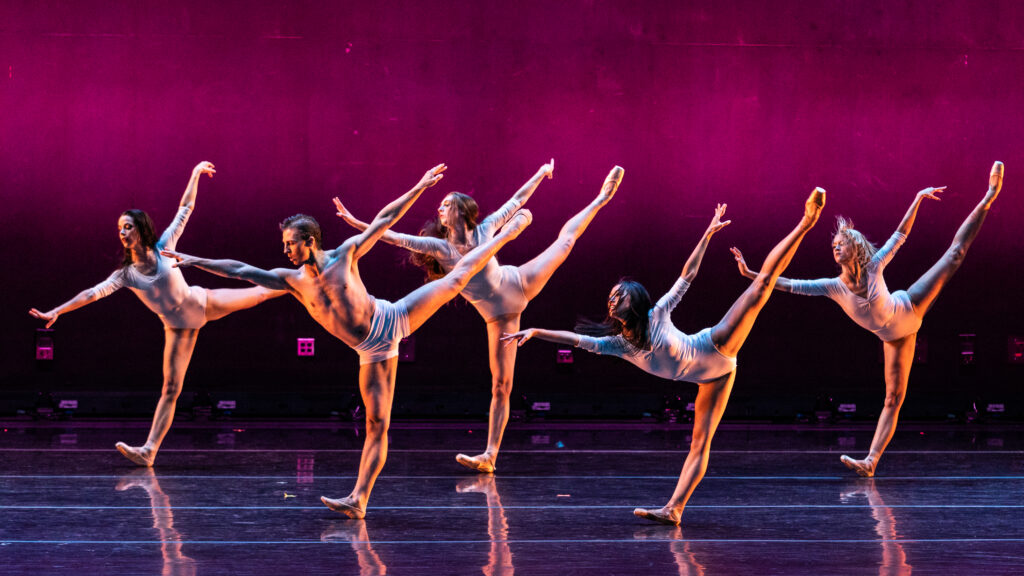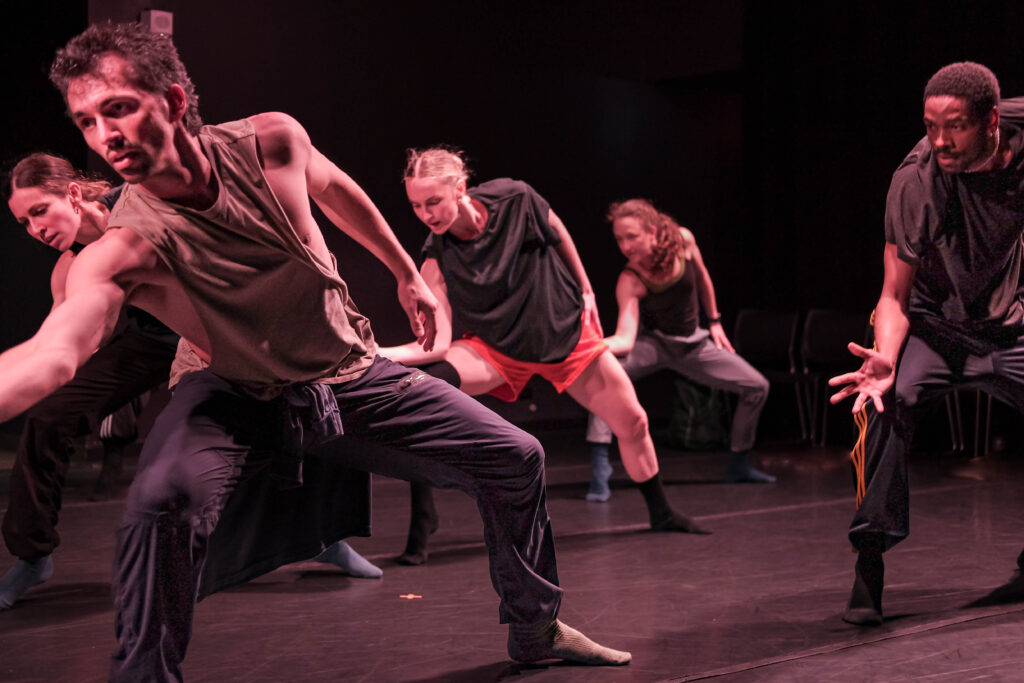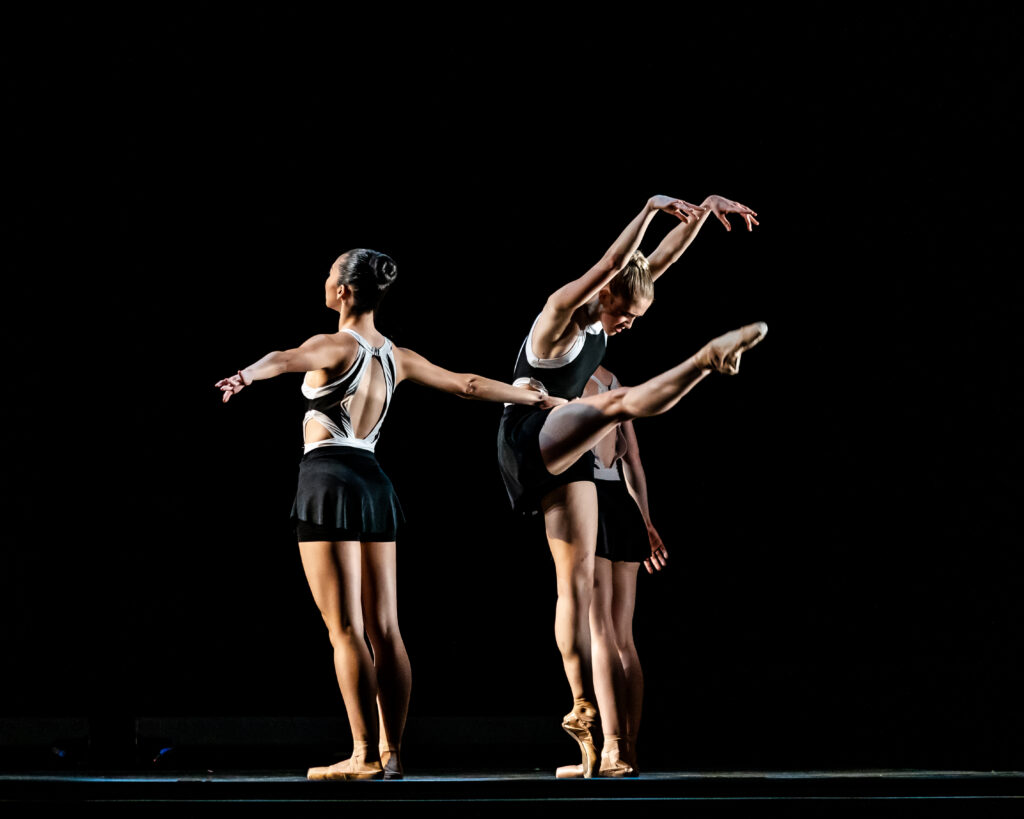4 Homegrown Companies Building Healthier Dance Ecosystems
When Gavin Stewart and Vanessa Owen were launching the contemporary company Stewart/Owen Dance in Asheville, North Carolina, they received some surprising advice. “Someone who worked in marketing in this region said that, when describing our company, ‘You probably shouldn’t mention that you’re from here, because that could negatively impact your ticket sales,’ ” Owen recalls.
They didn’t follow that suggestion. But it did make them think about something that would become fundamental to their company’s mission. “Why was ‘local’ a good word when talking about food, but when it comes to performing arts, people get a little weird about it?” Owen asks. “And how can we change that perspective in this community? We knew there were incredible artists here, but there was a bit of an image problem.”
In the performing arts, it’s often assumed that audiences consider international or “big city” imports higher quality than locally produced talent and creativity. But for decades, regional companies have been proving that false. Dance leaders with strong personal ties to their locations are building organizations that, rather than aspiring to national fame, are proudly identifying with and reflecting their communities; providing consistent, fulfilling work to local artists; and building dance infrastructure beyond established hubs. While these “homegrown” companies may have relatively low profiles, they’re a crucial part of the national dance landscape.
Seeing and Filling a Need
Personal connections to a place afford the directors and dancers of a local company an astute understanding of its dance scene. When dance artist Banning Bouldin, a Nashville native, returned to her hometown after a busy international performing career, she “could see there was this energy, this hunger for newness, and a desire to support local,” she says. When she founded the contemporary dance practice New Dialect, there was no infrastructure in place for professional contemporary dance artists to train daily and collaborate on projects in Nashville, but there was a wealth of talent. “I felt a confluence of desires to build what had been missing for me as a young dancer growing up, and what was still missing for all the really talented artists there now,” she says. “All they lacked was exposure.”

Owen/Cox Dance Group in Kansas City, Missouri, began when dancer Jennifer Owen and her husband, composer Brad Cox, saw an unfilled, distinctly Kansas City–style opportunity that meshed with their skill sets. “Kansas City is the only UNESCO site in North America for live music,” Owen says. “Yet as a company committed to presenting shows where music is as important as the dancing, we’re unique to our area.”


Local audiences are often hungry for something uniquely theirs, says Katie Puder, founder of Dallas’ Avant Chamber Ballet. “As a ballet company using the classical vocabulary in a modern way, we’re reacting to what the city of Dallas is like right now, which is a more liberal-minded, less traditional place,” she says. “It’s really welcoming to new works focused on collaboration and live music.”

An emphasis on homegrown culture can attract new audiences, too. “So many audience members who were regulars at The Joyce or Jacob’s Pillow have said to me, ‘We’re so lucky you’re here. Asheville needs this,’ ” says Nick Kepley, managing director of Stewart/Owen Dance. “And because there’s so much tourism here, there’s a hunger for things that are authentic, local and real.”
Challenges and Advantages
While they face the same funding challenges as any other company, homegrown groups have a unique angle in seeking donations and grants. The chance to support something that can be promoted as a permanent part of a city’s attractions often intrigues local funders.
Bouldin’s professional experience was a compelling narrative when meeting with potential donors. “There was a level of trust because I was from Nashville and had interesting stories to tell about the work I’d done as an artist and the collaborators I wanted to bring in,” she says. Outside of the city, though, she’s still battling entrenched regional stereotypes. “In Nashville itself, I feel a lot of support for local dance artists, but I did have to work twice as hard with nonlocal presenters and gatekeeping entities against this perception of Southern as under-cultured or under-exposed,” she says. Stewart agrees. “We’re carving a new lane here in western North Carolina, so we’re having to both educate and cultivate a donor base,” he says.
Symbiotic Partnering
Fostering relationships with local artists and organizations can provide creative support systems for homegrown companies. In 2014, New Dialect began a partnership with Nashville’s Metro Parks and Recreation Dance Division to develop contemporary dance programs for youth and adults in exchange for rehearsal space at a city-owned facility. “Since then, our relationship has only grown and deepened,” Bouldin says. “We offer community classes year round and hire teachers locally and nationally. Today this feels much more like building a community together and less like fulfilling the terms of an exchange. And we’ve never had to pay for rehearsal space.”


Heartfelt investment in a community’s well-being is a trademark of these companies, whose educational programs are often designed to directly connect participants with company artists. “Anyone who takes class through our school knows Gavin and Vanessa personally,” Kepley says. “We’re all locals—we see each other at the farmers’ market every week—which makes dance just that much more approachable.” Notably, according to Kepley, about 40 percent of Stewart/Owen Dance’s donors also participate in their adult community classes.
Building Dance Ecosystems
Instead of a “take over the world” growth mentality, many of these companies are aiming to create healthy local dance ecosystems, providing consistent support to the members of their artistic communities. Owen says the dancers she recruits are on weekly salaries that enable them to prioritize their work with Owen/Cox Dance Group during their contract period. At Avant Chamber Ballet, Puder says, the goal is not necessarily to get bigger but to improve dancer well-being. “I don’t see us turning into a national ballet company,” she says. “I’d rather have fewer artists and pay them really well.”
This fall, Stewart/Owen Dance affirmed its artists-first approach after Hurricane Helene devastated Asheville: Though the company was forced to cancel its fall performance series and classes, it committed to paying dancers and teachers half of their anticipated income.

As they pioneer forward-looking models and ideas, homegrown companies can sometimes act like tugboats, helping to pull bigger dance companies forward. Puder hopes that changing norms for a few dancers at a time will have a “ripple-up” effect on the entire dance scene. “I built the kind of company I wanted to dance for, where you can talk openly without fear, there’s a supportive environment, and it’s also artistically fulfilling,” she says. “That’s easier to do on a smaller scale as opposed to a big institution with a built-in identity. And if you’ve experienced a place with a healthy, modern viewpoint of how you can train and dance, when you go elsewhere you’re not willing to be treated badly.”
But these companies are also proving magnetic, putting more cities on the dance map and making dancers rethink where their careers can thrive. “Your job as an artist is to tap into the honesty of your experience and communicate that as clearly as possible,” says Stewart. “And if you’re doing that, why does it matter if you’re in Asheville, versus Los Angeles, New York, or London?”





